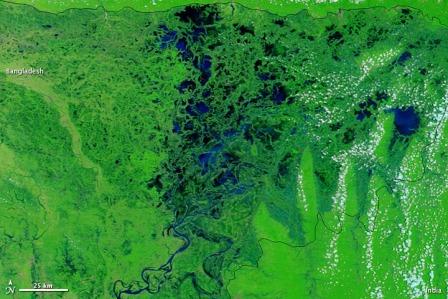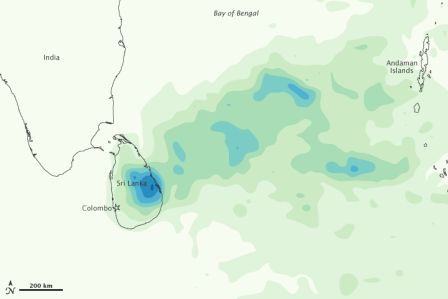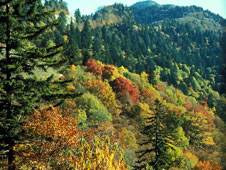NASA
Summer monsoon transforms northeastern Bangladesh - Updates from NASA Earth Observatory in 2011
Posted on 15 Jul, 2011 02:57 PMArticle and Image courtesy: NASA
 Bangladesh typically experiences a mild winter from October to March; a hot, muggy summer from March to June; and a warm, rainy monsoon from June to October. By early July 2011, rains had already transformed northeastern Bangladesh.
Bangladesh typically experiences a mild winter from October to March; a hot, muggy summer from March to June; and a warm, rainy monsoon from June to October. By early July 2011, rains had already transformed northeastern Bangladesh.
Heavy Rains in Sri Lanka - Update from Earth Observatory
Posted on 20 Jan, 2011 01:48 PMSri Lanka’s government stated that the death toll from flooding had risen to 13, and officials were arranging food drops to hardest-hit areas in the east.

![]()
Greener climate prediction by NASA shows plants slow warming
Posted on 20 Dec, 2010 06:01 PMArticle and Image Courtesy: NASA
A new NASA computer modeling effort has found that additional growth of plants and trees in a world with doubled atmospheric carbon dioxide levels would create a new negative feedback – a cooling effect – in the Earth's climate system that could work to reduce future global warming.
 A new NASA modeling effort found that in a doubled-carbon dioxide world plant growth could lessen global warming by about 0.3 degrees C globally. The same model found that the world would warm by 1.94 degrees C without this cooling feedback factored in. Image: Great Smoky Mountains National Park; Credit: National Park Service
A new NASA modeling effort found that in a doubled-carbon dioxide world plant growth could lessen global warming by about 0.3 degrees C globally. The same model found that the world would warm by 1.94 degrees C without this cooling feedback factored in. Image: Great Smoky Mountains National Park; Credit: National Park Service
Floods in Northeastern India - Images from NASA
Posted on 04 Nov, 2007 02:29 PM  Moderate Resolution Imaging Spectroradiometer (MODIS) on NASA's Aqua satellite captured images of flooded Brahmaputra River.
Moderate Resolution Imaging Spectroradiometer (MODIS) on NASA's Aqua satellite captured images of flooded Brahmaputra River.
NASA satellite tracks changes in Earth's freshwater distribution
Posted on 04 Nov, 2007 02:19 PM (Image taken from the NASA page mentioned below) Several African basins, such as the Congo, Zambezi and Nile, show significant drying over the past five years. In the United States, the Mississippi and Colorado River basins show water storage increases during that time.
(Image taken from the NASA page mentioned below) Several African basins, such as the Congo, Zambezi and Nile, show significant drying over the past five years. In the United States, the Mississippi and Colorado River basins show water storage increases during that time.